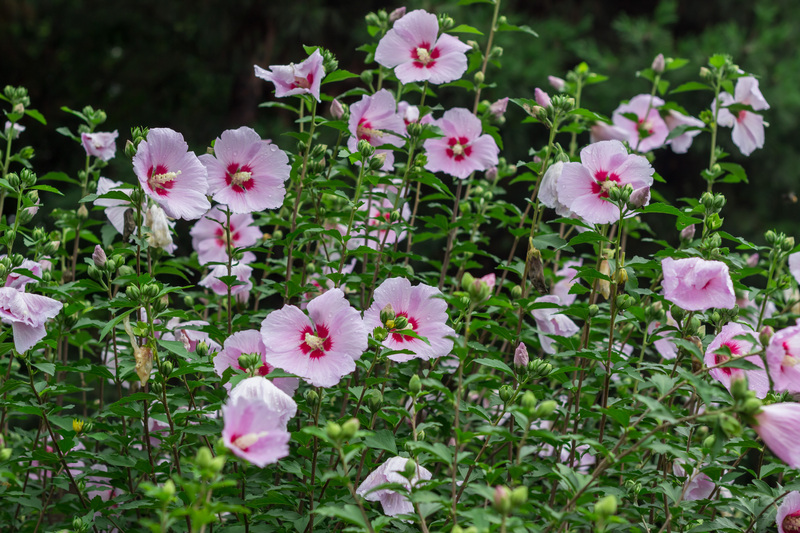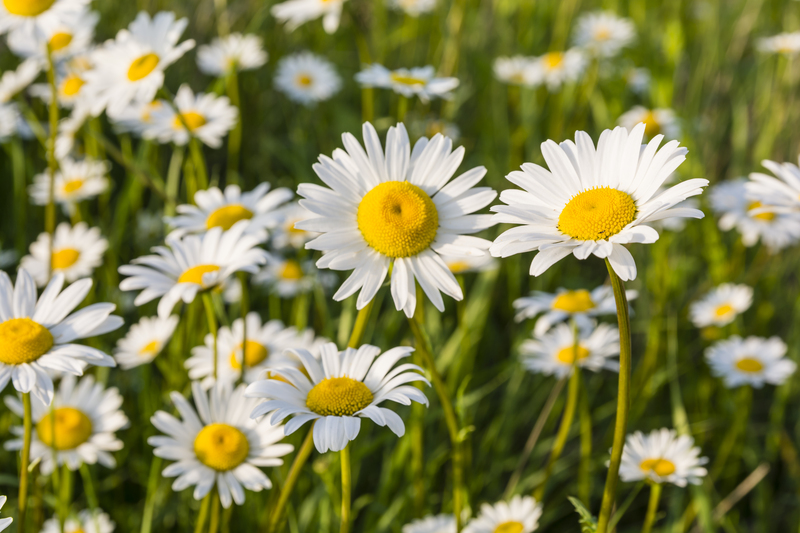Expert Tips for Selecting Plants That Make Your Window Box Stand Out
When it comes to transforming your home exterior, nothing does it quite like a vibrant, thoughtfully arranged window box. A window box brimming with colors and textures acts as both a focal point and an instant curb appeal booster. But with so many plant choices out there, how can you ensure your window boxes truly stand out? In this comprehensive article, you'll discover expert tips for selecting the ideal plants that will make your window box the envy of your neighborhood.
Why Choosing the Right Plants for Window Boxes Matters
A well-curated window box isn't just about tossing in a handful of flowers. From climate considerations to design principles, selecting the right plants is crucial for a box that thrives season after season. A standout window box provides:
- Visual harmony that complements your home's style
- Seasonal interest with color and texture year-round
- Low maintenance solutions for busy lifestyles
- Pollinator-friendly options for ecological benefits
Let's dive into actionable advice on making your window boxes a striking feature, regardless of your gardening expertise.

Assessing Light and Location: The First Step to Success
Before heading to the nursery, analyzing your window's exposure is essential. The direction your window faces--north, south, east, or west--will determine the light levels and, therefore, the types of plants that will thrive.
Plant Selection Based on Sun Exposure
- Full Sun: Choose sun-loving annuals and perennials--ideal for south or west-facing windows. Think petunias, geraniums, and succulents.
- Partial Shade: For east-facing windows, opt for impatiens, begonias, or coleus.
- Full Shade: North-facing windows call for shade-tolerant beauties like ferns, hostas, or heucheras.
Pro Tip: Assess your window's light by observing sun patterns over a weekend. This will help in choosing the best plants for your window box environment.
Window Box Design Principles: The Classic "Thriller, Filler, Spiller" Formula
Designing a show-stopping window box is part art, part science. Experts recommend the "thriller, filler, spiller" approach to create eye-catching balance and movement.
- Thrillers: These are vertical, attention-grabbing plants. Examples include ornamental grasses, tall salvias, or dracaenas.
- Fillers: These provide color and bulk in the central plane of your box--think marigolds, begonias, or pansies.
- Spillers: These cascade over the front, softening the box's edges. Ivy, sweet potato vine, bacopa, or lobelia are perfect choices.
When selecting window box plants, combine these three types in complementary colors and textures. This adds instant interest, ensuring that your window box stands out both up close and from the street.
Color Theory: Creating Impact Through Strategic Color Choices
Using the color wheel can help you assemble a harmonious, dynamic display. Consider the following combinations for show-stopping results:
- Analogous Colors: Choose plants in colors next to each other on the wheel (e.g., purple, blue, and pink) for a soothing effect.
- Complementary Colors: Go bold with opposites, like yellow and violet, or red and green.
- Monochromatic Scheme: Use varying shades of a single color for a chic, modern look.
White blooms and silver-foliage plants like Dusty Miller or lamb's ear create highlights, helping each plant pop.
Seasonal Planning: Keep Your Window Box Vibrant Year-Round
Expert gardeners plan for four-season interest. Mix annuals for vibrant, long-lasting summer color and perennials or evergreens for winter structure. Here's a guide for year-round appeal:
- Spring: Daffodils, tulips, pansies, and primroses provide early color. Bulbs can be layered beneath annuals for a surprise flourish.
- Summer: Geraniums, petunias, calibrachoa, and trailing verbena offer non-stop blooms.
- Autumn: Ornamental cabbages, mums, and trailing ivy keep things fresh as the weather cools.
- Winter: Dwarf conifers, cyclamens, winter pansies, and hardy heucheras hold up to frost and snow.
Tip: Swap out tired annuals in mid-season, or add small gourds and pine cones for a festive, ever-changing display.
Plant Selection: Top Picks for Show-Stopping Window Boxes
Ready to assemble your unique window box? Here are some tried-and-true plants that experts swear by for maximum impact and easy care:
Best Thrillers
- Cordyline: Dramatic, spiky foliage for an architectural look.
- Salvia: Upright growth and long-lasting blooms.
- Canna Lily: Tropical flair and vibrant colors.
Stellar Fillers
- Begonias: Shade-tolerant and available in many hues.
- Pelargoniums (Zonal Geraniums): Classic, low-maintenance favorites.
- Calibrachoa (Million Bells): Compact, profuse flowering plants.
Gorgeous Spillers
- Sweet Potato Vine: Lush, trailing foliage in bright or dark tones.
- Bacopa: Tiny white or lavender flowers all season long.
- Lobelia: Electric blue cascades that stand out from afar.
- Ivy: Evergreen charm all year round.
Go Beyond Flowers: Foliage, Edibles, and Fragrances
For window boxes that really stand out, don't limit yourself to flowers alone. Incorporating decorative foliage, herbs, and fragrant plants adds layers of interest:
- Silver and Variegated Leaves: Plants like Dusty Miller, carex, or coleus provide contrast and elegance.
- Herbs: Lavender, rosemary, thyme, and basil supply pleasing scents and edible garnishes just outside your kitchen window.
- Miniature Vegetables or Fruits: Try cherry tomatoes, strawberries, or chili peppers for a whimsical, productive twist.
Tip: Mixing textures--like the glossy leaves of basil with the feathery fronds of asparagus fern--will make your window box truly unique.
Matching Plant Choices to Box Size and Material
The size and composition of your window box will impact the health and aesthetics of your plants:
- Box Depth: Ensure at least 6-8 inches for root development, especially if including perennials or edibles.
- Width and Length: Larger boxes allow greater plant combinations and fuller displays.
- Material: Wood, metal, plastic, or fiberstone--each has different insulation and drainage properties.
Advice: If your window box is shallow or small, stick to compact, shallow-rooted plants like pansies, violas, or succulents.
Don't Forget Drainage and Soil Quality
All your plant selection efforts can be undone without proper drainage and soil. Here's why this matters:
- Good Drainage: Lack of it leads to root rot. Make sure your window box has enough drainage holes and use a saucer or tray to catch excess water if indoors.
- Quality Potting Mix: Use light, well-draining potting soil enhanced with compost or slow-release fertilizer for best results.
- Mulching: Add a thin layer of mulch or Spanish moss to retain moisture and keep roots cool, especially in summer.
Expert Maintenance Hacks for a Stand-Out Window Box
The best plants for your window box are the ones that stay healthy and vibrant. Follow these care tips to keep your display at peak performance:
- Regular Deadheading: Snip off spent blooms to encourage continuous flowering.
- Consistent Watering: Most window boxes need daily watering in summer. Early morning is best to avoid evaporation.
- Fertilizing: Use a liquid fertilizer every 2-4 weeks for lush growth and repeat blooms.
- Rotate for Even Growth: Gently turn your box every few days if only one side gets sunlight.
- Pest Management: Check for aphids, spider mites, or snails and remove them swiftly.
Pro Tip: Installing a simple drip irrigation system can save you time and ensure consistent watering.
Creative Finishing Touches: Accessories and Accents
Want to take your window box from great to truly exceptional? Consider adding:
- Decorative Stakes: Mini garden ornaments or stakes can add whimsy and structure.
- Fairy Lights: Tiny solar lights create magic at night, drawing even more attention.
- Beautiful Brackets: Ornate or painted brackets will frame your window box and make it pop from a distance.

The Ultimate Checklist: Choosing Plants That Make Your Window Box Stand Out
To summarize, here's a handy checklist for selecting standout plants for window boxes:
- Assess the light and exposure of your window area
- Choose a combination of thrillers, fillers, and spillers
- Pick plants with complementary colors and varied textures
- Plan for seasonal changes to ensure four-season beauty
- Add foliage, herbs, and edibles for added interest
- Match plant choices to your box's size and material
- Use quality soil and ensure excellent drainage
- Commit to regular maintenance and care
- Accentuate with creative decor for the finishing touch
Conclusion: Curate a Window Box That Dazzles
A standout window box is within everyone's reach--a blend of careful planning, smart plant selection, and a bit of creativity. Follow these expert tips and watch your window boxes flourish, turning heads and drawing admiration all year long. Whether you love classic cottage looks, sleek modern styles, or edible gardens by your window, the secret is always choosing plants that fit your space and style.
Ready to get started? Head to your local nursery, assess your window's light, and use these expert tips to select the perfect plants. Your windowsill will soon become the most eye-catching feature on your block!